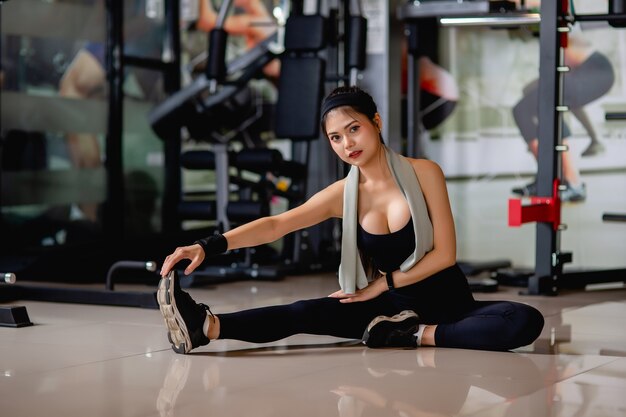The squat is a key exercise in fitness and bodybuilding, known for its versatility and effectiveness in working the lower body, especially the thighs and buttocks. This article explores the details of the squat, including its mechanics, variations, and potential risks.
The Science of the Squat
Squats are multi-joint exercises that engage several muscle groups at once. They primarily target the thighs and buttocks but also work the hip flexors, femoral adductors and abductors, leg flexors and extensors, and trunk flexors and extensors.
The back squat is the most common type, where you position a barbell on your trapezius muscles, behind your shoulders, and perform the squatting motion. The load should be centered on your feet throughout the movement, and your knees should not cave in or extend too far past your toes. Both the descent and ascent should be controlled, with your spine remaining vertical.
There are three squat depths: partial (above parallel), half (parallel), and full (deep squat). Each has its own benefits and challenges, depending on your fitness level, flexibility, and goals.
The Art of Squat Variations
Beyond the back squat, there are several variations that target different muscles and add variety to your workouts:
– Free Squat: No added weight, arms extended forward or behind the head.
– Front Squat: Barbell on the front shoulders, emphasizing the quadriceps.
– Goblet Squat: Holding a kettlebell to the chest with both hands.
– Sumo Squat: Legs placed wider apart to engage the adductor muscles.
– Bulgarian Squat: Single-leg squat with the non-working foot on a bench or box.
– Pistol Squat: Single-leg squat with the non-working leg extended forward.
– Sissy Squat: On the balls of the feet, torso leaning back, knees extending beyond the feet.
– Jump Squat: Squat ending with a jump.
Understanding Squat-Induced Fatigue
Squatting can be quite demanding as it engages multiple muscle groups at once, leading to both muscle and central metabolic fatigue. However, with regular practice, you can train your body to handle this fatigue better, improving your endurance and performance.
Squatting: An Exercise in Risk Management
Squats are generally safe but can be risky with poor technique, inadequate warm-up, or too much weight. Common injuries include back strains, knee injuries, and muscle tears. Proper joint mobility, especially in the hips and ankles, is crucial to avoid putting extra stress on the spine.
Instructors are key to ensuring squats are done safely, guiding proper technique, and monitoring progress. However, you also need to listen to your body and adjust your movements if you feel any pain or discomfort.
In conclusion, squats are a powerful way to strengthen the lower body and boost overall fitness. But they must be done with the right technique, preparation, and awareness of your limits to be both effective and safe. Understanding the mechanics and respecting your body’s capabilities can help you enjoy the many benefits of squats while reducing the risk of injury.







